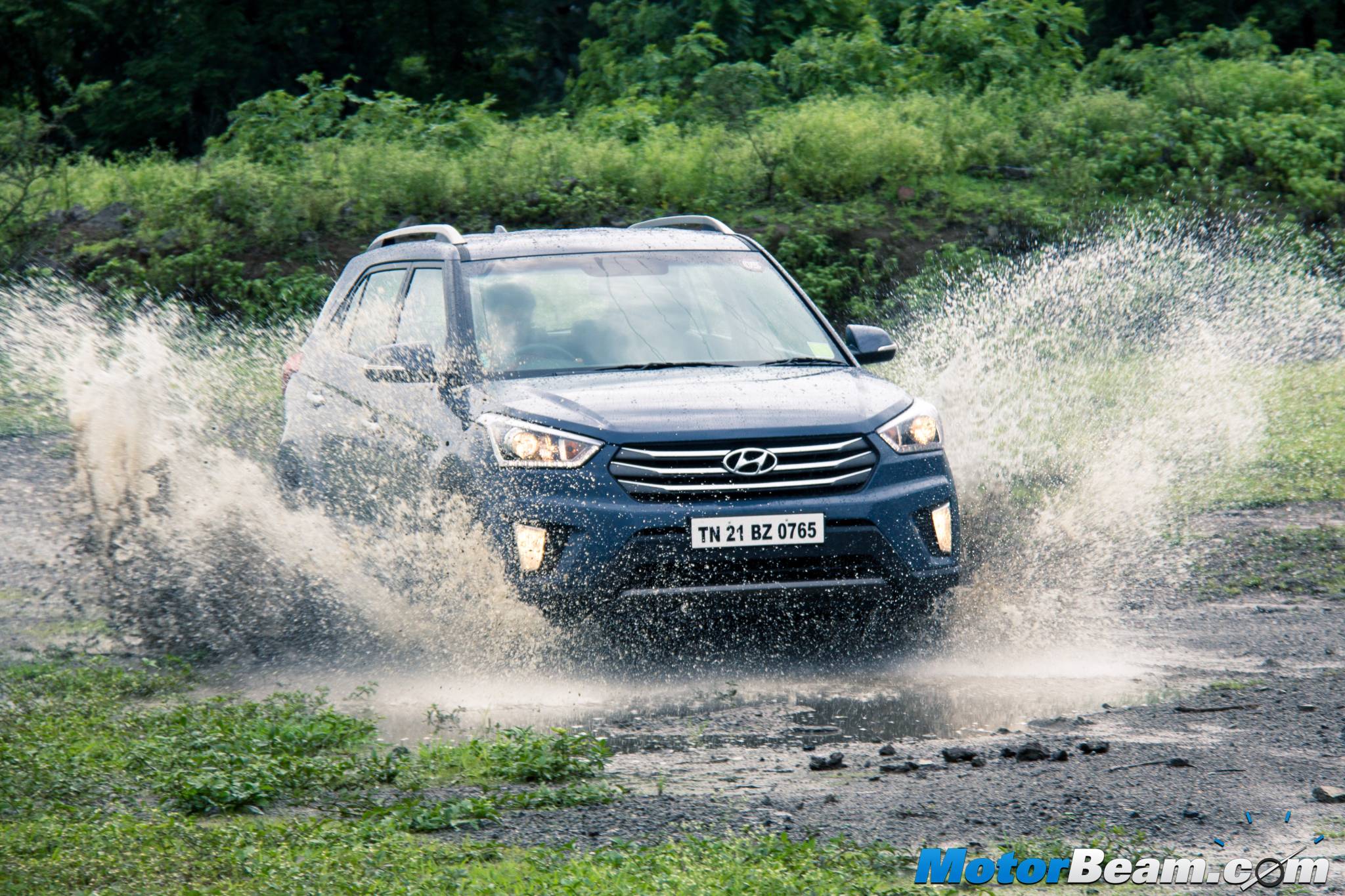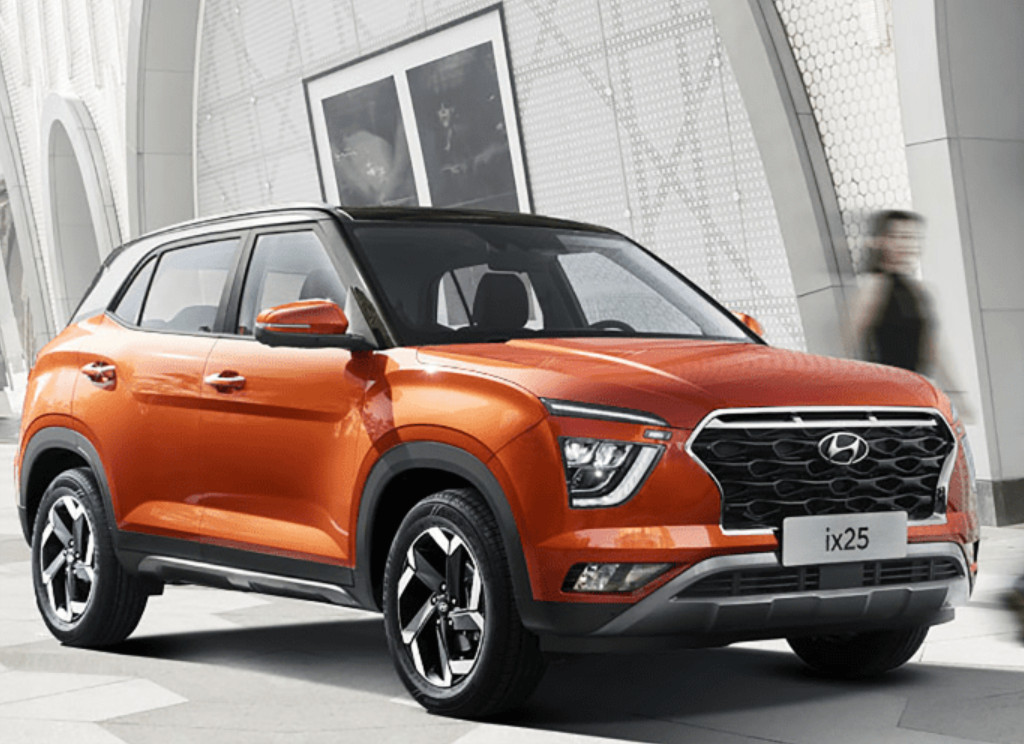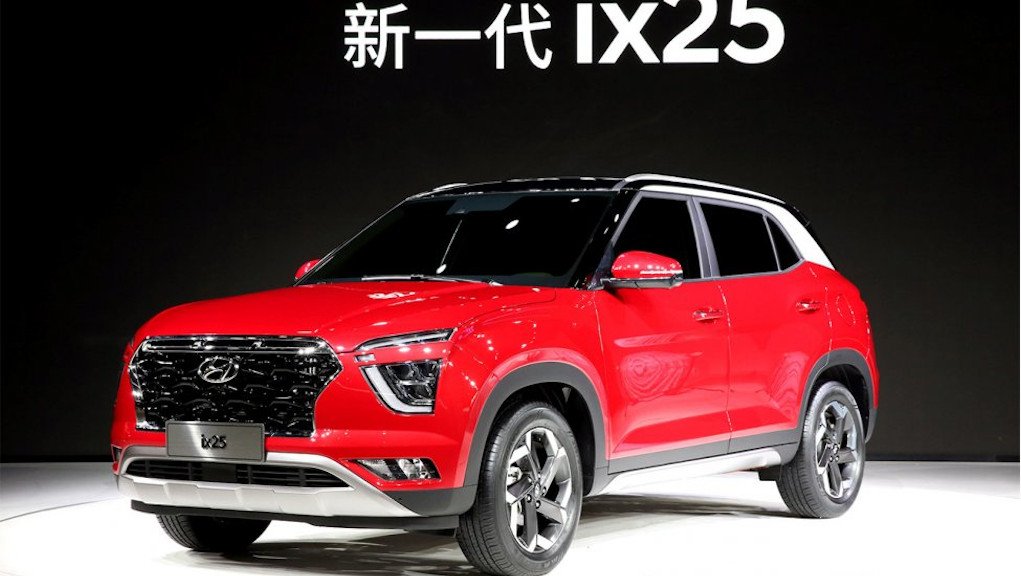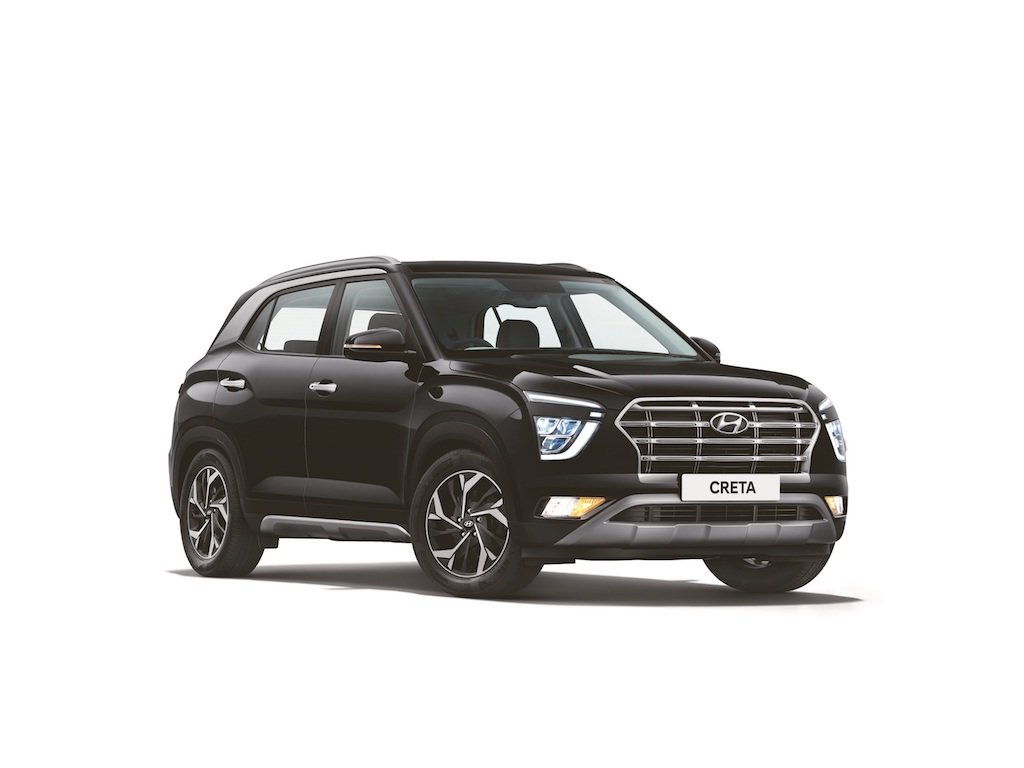
Hyundai Creta Review
Car Tested: 2015 Hyundai Creta
Price OTR Mumbai: Rs. 10.27 – 16.62 lakhs
The Hyundai Creta is a great package of design, quality, comfort and performance
The SUV market continues to grow in India and other parts of the world. The compact SUV segment is seeing a great spike in demand in our country and the trend is just going to get bigger with time. Every manufacturer has their eyes set on this high potential segment and now Hyundai has brought out its offering, the Creta to the market. The Korean automaker has tagged its product as the ‘Perfect SUV’ and has developed the Hyundai Creta with Indian customers in mind. The vehicle also comes with the option of a diesel automatic gearbox, something which is quite unique to this segment. How does the baby Santa Fe fare, a drive through various types of Maharashtra roads helps us get our answer.
Motor Quest: The Creta was first showcased in concept form at Auto China in Beijing in April 2014. The vehicle went on sale in August the same year as the ix25 in China but Hyundai has named the car as Creta for the Indian and international markets. The Creta name comes from the word creative and India is the second country to get this vehicle.
The Creta carries Hyundai’s fluidic sculpture 2.0 design language which looks appealing
Exteriors – From nose to tail the Hyundai Creta has been designed keenly. There’s not a single angle from where it looks disproportionate or bland. The designers have done a fabulous work with the Fluidic Sculpture 2.0, which makes it look like Santa Fe’s younger brother. The lean and aggressive front styling consists of a shiny and wide three-slat grille with the Hyundai badge sitting proudly in the middle. The sleek projector headlights with LED DRLs are the party piece of the front styling. The muscular bumper integrates the faux silver skid plate and vertically stacked foglamps. Just notice how the bonnet runs straight and suddenly cuts flat from the grille, this makes it look like a true blue SUV.
The car gets many SUV elements and the design comes across as very neat
The Creta reminds one of the Santa Fe at first sight
There is nothing bulbous on the side profile of the Creta, which makes it carry the butch SUV stance from this angle as well. The squarish roofline, sharp and rising crease lines, roof rails, high ground clearance and pronounced wheel arches with black cladding are undoubtedly the ingredients of a full-flavoured SUV. The 5-spoke diamond-cut alloys further add a pinch of premium appearance to the Creta. The sharp shoulder line goes up to the tail lights that carry the crease to the tailgate in a wave pattern making a smart number plate housing, nice touch. With a silver skid plate and dual tone bumper, the Creta looks complete from the rear.
The interior continues the attractive design theme forward with a clean dashboard
Interiors – While the Creta looks powerful on the outside, it also has a warm and welcoming cabin that looks plush with its dual-tone beige and black theme. The layered dashboard gets a good dose of beige in the middle that extends to the door handles, looks neat. Apart from the roof and dashboard, the entire cabin is treated in black including the seats, which looks quite sporty and is easy to maintain as beige seats are big dirt magnets. The contoured steering wheel feels great to hold and looks good with the brushed silver finish in the bottom. It gets controls for the MID, audio system and Bluetooth telephony. The instrument cluster is the same as the Elite i20 with exactly the same display layout of the MID. Sadly, Hyundai has again skipped the distance to empty and average fuel efficiency display on the Creta. The car’s mirrors don’t auto open when you approach the vehicle, like they do in the Elite i20.
The cabin has plenty of features & is high quality
The stalks feel reassuring to use and has multiple controls. There are no auto headlamps and rain sensing wipers but Hyundai is offering follow-me-home headlamps as standard and two settings for the rear wiper. The controls fall easy within reach, it gets ORVMs controls placed on the doors while the lock/unlock button is also placed on the doors unlike the Elite i20 and the Creta gets auto speed sensing lock feature (can be deactivated too). It gets fully automatic climate control system with mood change bar (turns blue when cold, white when moderate and orange when the inside temperature is high) and cluster ionizer that chills the cabin quickly. The front AC vents are neatly designed while the rear passengers also get vents in the middle. There is a digital clock on top of the dashboard that looks cool.
Rear seat has plenty of room but doesn’t feel as airy as it should
The big touchscreen AVN system looks quite appealing and is very convenient to use having great touch quality, don’t expect it to be as slick as that on the iPhone but has a very fast and responsive touch. It offers navigation and also doubles up as the rear view camera display unlike the Elite i20 that has a small display on the centre rearview mirror. Audio quality is great by OEM standards and the Bluetooth connectivity with Smartphone is seamless. There is a nifty space under the climate control system where you can keep your phone and connect it with the AUX, USB or power outlet for charging. The settings on the instrument cluster (to toggle car locking, etc.) only works when the handbrake is up. Similarly, one can’t pair their phone via Bluetooth when the car is in motion.
Comfort levels are super & the Creta feels premium
The Creta’s cabin is a very convenient and comfortable place to be in as far as ergonomics are concerned. The driving position is relatively high and commanding with good view all around. The driver side sun visor has a ticket holder while the passenger side gets a big vanity mirror. Despite having 6 airbags, the Creta comes with grab handles unlike the Ford EcoSport Titanium+ trim which gets none. The footwell is spacious that also gets dead pedal for comfortable long journeys. The armrest is quite useful with a cup holder and space to keep knick knacks. There are two neatly positioned cubby holes near the handbrake and a sunglass holder mounted on the roof to keep the cabin organised. The front doors have big pockets that can accommodate 1 litre bottles easily. The rear door pockets are sizeable too.
The Creta has excellent quality and comes with plenty of storage bins too
The seats of the Creta are extremely comfortable with ideal cushioning both at the front and rear. The front seats are very supportive when it comes to thigh support, back and neck support. The rear seats are also quite relaxing with a perfect recline angle, ample headroom, shoulder room and generous knee room. The only chink in the armour is the under thigh support at the rear, which is a bit lacking for tall passengers. There is a centre arm rest with cupholders for rear passengers along with rear AC vents and a power outlet for convenience. The integrated door armrest at the back is useful too. There are seat back pockets to place magazines and newspapers. The floor in the centre is almost flat for the middle passenger but the middle seat area is slightly raised which could make it uncomfortable over long journeys. Because of the raised shoulder line, narrowing roof and low seats, the rear windows feel a bit short. Speaking of windows, one funny thing we noticed is the sharp edge of the front windows because of the design (similar to the Maruti Swift). The overall quality, fit and finish is excellent, specially the stitching on the seats that feel premium to look at. The boot has decent space and the rear seats can be folded flat. Only the automatic version gets the 60:40 split seats. Underneath you’ll find a same size spare alloy wheel, which is a big relief. The car also gets a nice sounding dual horn.
All the engines offer good performance making the Hyundai Creta quite quick
Performance – Hyundai always gives multiple powertrain options on its cars and same is the case with the Creta too. The compact SUV comes with two diesel engines and one petrol unit. Starting with the petrol mill, the 1.6-litre Dual VTVT engine generates 123 PS and 151 Nm, being matched to a 6-speed manual gearbox. The NVH levels on the vehicle are terrific, the petrol motor being barely audible even when you are driving at triple digit speeds, it does get vocal once you get past the mid-range. Low-end performance is where the petrol-powered Creta shines as the mid-range isn’t very strong while the top-end is quite lacking, it’s best to short shift using the smooth shifting gearbox and the light clutch. The ARAI claimed mileage is 15.29 km/l so real world mileage will be lesser.
The 1.6-litre diesel has a strong mid-range but lacks low-end grunt
The 1.6 diesel is super refined and offers very punchy performance
Diesel is the more popular choice in this segment and Hyundai has 1.4-litre and 1.6-litre oil burners on offer. Both these engines also do duty on the Verna with the smaller diesel belting out 90 PS and 220 Nm. The 1.6 diesel is considerably more powerful with 128 PS and 260 Nm. Both the powerplants are matched to a 6-speed manual gearbox and Hyundai has managed to tune the transmission for butter smooth shifts, aided by a very light clutch. The 1.6 diesel has quite a lot of lag in the low-end so one does have to give it the beans in stop-go traffic as the turbo spools up in all its glory past 1900 RPM. The mid-range is the strong point of the motor while the power fades off quickly post 3800 RPM. When ambling in the city, downshifts are needed to get going quickly.
The diesel automatic is the stand out powertrain as it makes driving hassle free
The 1.6 diesel mill is also matched to a 6-speed automatic gearbox. Although a single-clutch unit, it’s very responsive to throttle inputs and there is a tiptronic function on the lever so as to let one take care of shifts. When driven in D mode, performance from the motor is slick with the turbo lag not being very apparent. The 1.6 motor feels more linear in the automatic version but you miss the punchiness of the manual as the latter has the silence before the storm. The engine up shifts at around 4000 RPM and won’t stretch the motor all the way to the 5000 RPM redline which is encountered on the manual. 100 km/hr in sixth gear sees the tacho ticking in a shade above the 2000 RPM mark while the ton comes in third gear. The ARAI mileage for the 1.4 diesel is 21.38 km/l while the 1.6 diesel returns 19.67 km/l in manual guise and 17.01 km/l in automatic avatar.
Handling is much better compared to other Hyundai cars, the Creta’s steering isn’t vague
Driving Dynamics – Ride quality on Hyundai cars is good and the Creta being an SUV needs to be even better and it is. The vehicle does a fine job of tackling bad roads and doesn’t transfer much to the inside, even on broken roads. We took the car over some really massive craters and with the speed set to low, it did an excellent job. Increase the speed and the Creta does make the sharp bumps felt to occupants but overall the ride quality is very good. Even the stability at speed is supreme and the Creta does feel glued to the road, in spite of the height and ground clearance. There is no AWD on offer yet and thus this Hyundai is best confined to the urban jungle.
Ride quality is excellent and this Hyundai simply glides over most of the bumps
Ride & handling balance is quite simply excellent
One can’t defy physics so there is some bit of roll around corners but the big surprise is the improved steering. Hyundai has been working on improving the dynamics of its cars and the Creta is by far the best yet. The steering doesn’t feel vague in the centre and does weigh up decently well at speed although it’s not quick or sharp and feedback levels are still not great. It certainly isn’t close to the segment benchmark but gone are the days when you lacked confidence driving a Hyundai. The Bridgestone tyres offer good grip and braking performance is excellent too, the car stopping with no drama even under hard braking.
Hyundai has equipped the Creta with six airbags on the top trim but the AT doesn’t get it
Safety and After Sales Service – Hyundai gives special attention to safety and same is the case with the Creta. The automaker is offering the Creta with ABS and EBD as standard across all variants while the dual front airbags come standard starting from the S+ variant and finally it’s the SX (O) range topping model that gets six airbags. The SX (O) further gets Electronic Stability Control along with Hillstart Assist Control. There is a Vehicle Stability Management system, which is an active safety feature that combines the ESP inputs with the electronic steering for emergency manoeuvres. Hyundai claims that the Creta will have the lowest cost of ownership in its class. The carmaker has a pretty wide sales and service network, which is quite reliable. Hyundai is also offering 3 years and unlimited kilometres of warranty with the Creta.
The Hyundai Creta might be priced at a premium but has a lot to offer
Verdict – The Hyundai Creta has been hyped a lot but does it live up to the expectations? YES, it does. While this Korean compact SUV isn’t a corner craver or a capable off-roader (due to the lack of 4×4), it certainly ticks most of the important boxes. The styling is very pleasing both inside-out while the multiple engine options do lend it good performance. Add to that the diesel automatic and there are few options at this price point. What makes the Creta such a terrific all-rounder is the balanced dynamics, feature loaded cabin, quality interiors and an excellent ride. Sure the car is more expensive than its immediate rival but it does offer more to the buyer.
The Hyundai Creta is quite a loaded car with top notch quality. It gives you the premium feel on the inside while the engines have a lot of performance on offer. A good seating position, smooth transmissions and compact yet attractive appearance makes it the perfect SUV for the urban runabout.
If the diesel automatic is offered in SX (O) trim, it would cost a lakh more
What’s Cool
* Attractive design, looks like a Santa Fe from certain angles
* Quality interiors with a nice layout, the cabin is a nice place to be in
* Loads of features on offer, there is no dearth of equipment
* NVH levels are excellent, driving is hassle free thanks to light controls
* Ride quality is superb, the Creta takes almost everything in its stride with utmost ease
* Improved steering feel over other Hyundais, it’s among the best handling car from the company
What’s Not So Cool
* Misses out on a distance to empty feature
* Top-end diesel manual doesn’t get split folding rear seats
* 1.6 diesel has considerable low-end lag
Alternatives: Renault Duster, Mahindra XUV500
The Creta is a winner already, market response shows it’s set to become segment king
Hyundai Creta Specifications
* Engine: 1591cc, Dual VTVT (P); 1396cc, CRDi (D); 1582cc, CRDi VGT (D)
* Power: 123 PS @ 6400 RPM (P); 90 PS @ 4000 RPM (D); 128 PS @ 4000 RPM (D)
* Torque: 151 Nm @ 4850 RPM (P); 220 Nm @ 1500-2750 RPM (D); 260 Nm @ 1900-2750 RPM (D)
* Transmission: 6-speed manual (P); 6-speed manual (D); 6-speed manual or 6-speed automatic (D)
* 0-100 km/hr: 10.84 seconds (1.6 D), 11.68 seconds (1.6 P)
* Top Speed: 190 km/hr
* Fuel Consumption: 10-12 km/l (P); 15-17 km/l (D); 12-14 km/l (D)
* Fuel Type: Petrol, Diesel
* Suspension: McPherson Struts (Front), Torsion Beam (Rear)
* Tyres: 205/65/16 (Base, S, S+, SX, SX+), 215/60/17 SX (O)
* Brakes: Ventilated Disc (Front), Drum (Rear), ABS
* Safety: Six Airbags, ABS, EBD, ESC, VSM, Hill Assist Control
Hyundai Creta Dimensions
* Overall length x width x height: 4270 mm X 1780 mm X 1630 mm
* Wheelbase: 2590 mm
* Turning Radius: 5.2 metres (est.)
* Ground clearance: 190 mm
* Boot Volume: 400 litres
* Fuel Tank Capacity: 55 litres
* Kerb Weight: 1200 kgs (est.)
The Hyundai Creta is an all-round SUV which is quite practical for our roads
Testers’ Note:
Picture Editing – Sri Manikanta Achanta
Further Reading –
Hyundai Creta Video Review
Hyundai Creta Petrol Automatic Review
Hyundai Creta vs Renault Duster vs Mahindra XUV500
Hyundai Creta vs Renault Duster vs Mahindra XUV500 – Video




